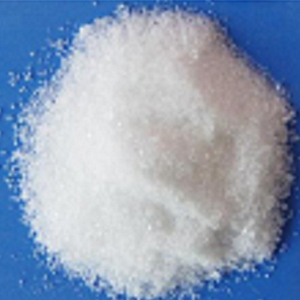
Specifications of Butylated hydroxyanisole:
Butylated hydroxyanisole is a white to slightly yellow waxy flakes with characteristic odor.
It is freely soluble in alcohol, propylene glycol. It is insoluble in water.
Melting Point: 48C to 63C
Residue on ignition: 0.05% max
Arsenic: 3ppm max
Assay: 98.5% min of C11H16O2.
Butylated Hydroxyanisole BP Grade
Butylhydroxyanisole Ph Eur
C11H16O2 --- 180.3 --- 25013-16-5
Action and use: Antioxidant.
DEFINITION
Butylhydroxyanisole is 2-(1,1-dimethylethyl)-4-methoxyphenol containing not more than 10 per cent of 3-(1,1-dimethylethyl)-4-methoxyphenol.
CHARACTERS
A white, yellowish or slightly pinkish, crystalline powder, practically insoluble in water, very soluble in methylene chloride, freely soluble in alcohol and in fatty oils. It dissolves in dilute solutions of alkali hydroxides.
IDENTIFICATION
A. Examine the chromatograms obtained in the test for related substances. The principal spot in the chromatogram obtained with test solution (b) is similar in position, colour and size to the principal spot in the chromatogram obtained with reference solution (a).
B. To 0.5 ml of solution S (see Tests) add 10 ml of aminopyrazolone solution and 1 ml of potassium ferricyanide solution. Mix and add 10 ml of methylene chloride. Shake vigorously. After separation, the organic layer is red.
C. Dissolve about 10 mg in 2 ml of alcohol. Add 1 ml of a 1 g/l solution of 17β-Hydroxyandrost-4-en-3-one propionate in alcohol and 2 ml of dilute sodium hydroxide solution. Heat in a waterbath at 80C for 10 min and allow to cool. A red colour develops.
TESTS
Solution S: Dissolve 2.5 g in alcohol R and dilute to 25 ml with the same solvent.
Appearance of solution: Solution S is clear and not more intensely coloured than intensity 5 of the range of reference solutions of the most appropriate.
Related substances: To pass the test --- (0.5 per cent).
Heavy metals: 1.0 g complies with limit test C for heavy metals (10 ppm). Prepare the standard using 1 ml of lead standard solution (10 ppm Pb).
Sulphated ash: Not more than 0.1 per cent, determined on 1.0 g.
STORAGE
Store protected from light.
Butylated Hydroxyanisole USP NF Grade
C11H16O2 --- 180.24
Phenol, (1,1-dimethylethyl)-4-methoxy-.
tert-Butyl-4-methoxyphenol [25013-16-5].
Butylated Hydroxyanisole contains not less than 98.5 percent of C11H16O2.
Packaging and storage: Preserve in well-closed containers.
Identification: To 5 mL of a 1 in 10,000 solution in 72% alcohol add 2 mL of sodium borate solution (1 in 50) and 1 mL of a 1 in 10,000 solution of 2,6-dichloroquinone-chlorimide in dehydrated alcohol, and mix: a blue color is produced.
Residue on ignition: not more than 0.01%, determined on a 10-g specimen.
Heavy metals: 0.001%.
Organic volatile impurities: meets the requirements.
BHA Butylated Hydroxyanisole FCC Food Grade
C11H16O2 Formula wt 180.25
INS: 320 CAS: [25013-16-5]
DESCRIPTION
BHA occurs as a white or slightly yellow, waxy solid. It is predominantly 3-tert-butyl-4-hydroxyanisole (3-BHA), with varying amounts of 2-tert-butyl-4-hydroxyanisole (2-BHA). It melts between 48C and 63C. It is freely soluble in alcohol and in propylene glycol, and insoluble in water.
Function: Antioxidant.
Salient Features of BHA
The most effective antioxidant, imparting excellent stability for an array of food products, fats, shortenings, vitamins, pet foods, cosmetics pharmaceutical products and packaging material.
BHA, reduces the oxidative deterioration of edible oils and fats, loss of flavour, colour and nutritive value of foods.
BHA, THE BETTER ANTIOXIDANT: BHA normally is a mixture of 2 isomers, 2 tert butyl and 3 tert butyl isomers 3 tert butyl isomer has better antioxidant property.
White free flowing crystalline Flakes.
Stable to heat and mildly alkaline conditions.
20% colorless solution in propylene glycol remains colorless even when heated at 1940F for 1hr.
BHA SYNERGISTIC EFFECT: BHA gives greater synergistic effect with TBHQ, BHT and propyl gallate than that which might be expected from contribution of each individual antioxidant.